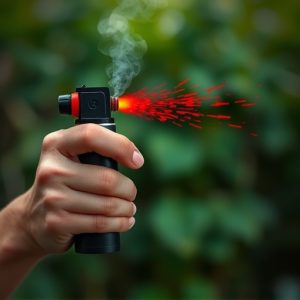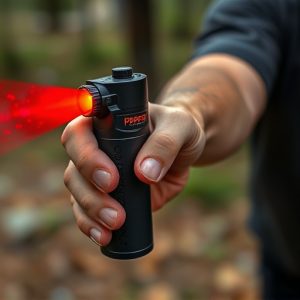Mastering Low Light Pepper Spray Tactics: System, Training, and Safety
In low light tactical situations, specialized low light pepper spray enhances visibility and disrupt…….
In low light tactical situations, specialized low light pepper spray enhances visibility and disrupts assailants' senses by targeting eyes and face, aiding in defense and control. A tactical system includes a durable handheld device with adjustable nozzles and integrated flashlights, requiring user training on deployment, range, deactivation, and safety to ensure effective yet safe use under limited visibility, while adhering to legal guidelines.
In the realm of personal defense, tactical inflammatory spray systems have emerged as a powerful tool for self-protection in low light scenarios. This article delves into the strategic deployment of low light pepper spray tactics, exploring its unique components and benefits. We’ll break down the key elements of an effective defense system, including training techniques and legal considerations. Understand the art of navigating dangerous situations with this game-changing, non-lethal force multiplier.
- Understanding Low Light Pepper Spray Tactics
- Components of a Tactical Inflammatory Spray Defense System
- Training and Application Techniques
- Legal Considerations and Safety Precautions
Understanding Low Light Pepper Spray Tactics
In tactical situations, especially during low light conditions like night operations or confined spaces, understanding how to effectively deploy low light pepper spray is paramount for defense and control. These specialized formulations are designed to maximize visibility and disrupt an assailant’s senses under reduced lighting. The key tactic involves strategic application, aiming for the eyes and face where sensitivity is highest, to temporarily blind and disorient the opponent while maintaining safety for the user.
Training in low light pepper spray tactics ensures operators can accurately assess their environment, minimizing collateral damage and ensuring a safe retreat or follow-up action. This includes proficiency in using specialized equipment such as illuminated probes and visors, as well as understanding the range, spread, and deactivation procedures of the spray to optimize its effectiveness in challenging conditions.
Components of a Tactical Inflammatory Spray Defense System
A Tactical Inflammatory Spray Defense System typically consists of several key components designed to provide effective protection in challenging environments, particularly during low light conditions. The first crucial element is the low light pepper spray itself—formulated to optimize visibility and effectiveness in dimly lit scenarios. This specialized spray delivers a powerful irritant that temporarily incapacitates threats, allowing users to escape or summon help.
Complementing the pepper spray is a durable and ergonomic delivery mechanism. This device, often handheld, must be easy to operate with one hand while wearing thick gloves. Advanced models incorporate tactical features like adjustable nozzle settings, burst modes, and a built-in flashlight for enhanced low light performance. Effective training and protocols are also vital; users need to understand the spray’s range, effectiveness, and decontamination procedures to ensure safe and strategic deployment.
Training and Application Techniques
Training for tactical inflammatory spray, or pepper spray, deployment in low-light conditions is paramount for effective defense. Officers learn specialized techniques to ensure accuracy and safety under dim lighting, utilizing night vision devices and training with simulated night-time scenarios. This prepares them to respond swiftly and precisely when visibility is limited.
Application involves strategic targeting of vulnerable areas, such as the eyes, face, and neck, to neutralise threats quickly. In low light, precision becomes even more critical, so officers are trained to aim for specific zones to maximise impact while minimising risk of collateral damage or accidental discharge in sensitive environments.
Legal Considerations and Safety Precautions
When employing tactical inflammatory spray defense systems, particularly in low light conditions, understanding legal considerations and safety precautions is paramount. In many jurisdictions, the use of pepper spray or similar agents is strictly regulated to ensure they are deployed only as a last resort for self-defense. Users must be aware of their local laws and have proper training to avoid any potential legal repercussions.
Safety precautions extend beyond legality. Inflammatory sprays can cause severe eye irritation, respiratory distress, and even temporary blindness in low light scenarios where visibility is already compromised. It’s crucial for individuals employing these tactics to wear appropriate personal protective equipment, including eye protection, and ensure they have a clear understanding of the spray’s range, duration, and de-escalation strategies to minimize harm to themselves and others.
In conclusion, tactical inflammatory spray defense systems, especially in low light scenarios, offer a powerful tool for self-defense. Understanding the key components, training in application techniques, and adhering to legal considerations ensure effective use while prioritizing safety. Mastering low light pepper spray tactics empowers individuals to protect themselves confidently in diverse environments.


